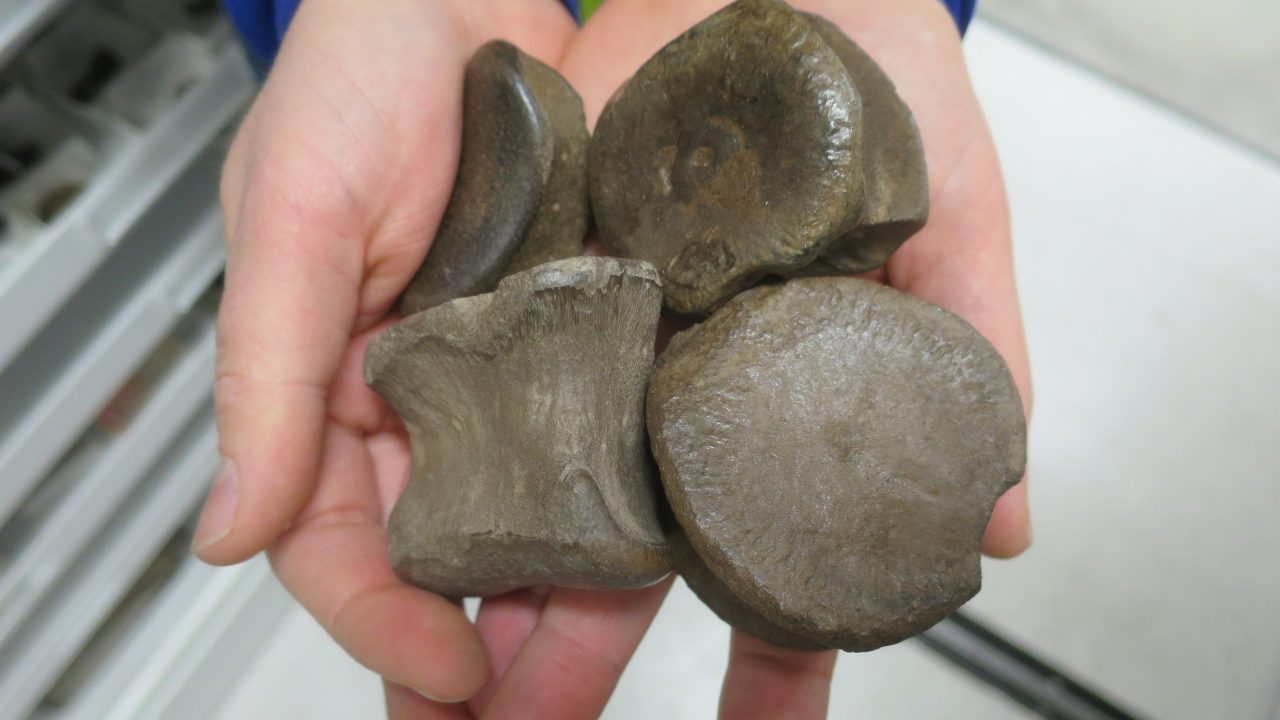A new species of hadrosaurid dinosaur has been identified from bones discovered in the Prince Creek Formation of northern Alaska.

An artist’s depiction of what paleontologists believe Ugrunaaluk kuukpikensis looked like. Image credit: James Havens.
The new dinosaur, scientifically named Ugrunaaluk kuukpikensis (means ancient grazer of the Colville River) was nearly 30 feet long and lived 69 million years ago in the Upper Cretaceous.
Its skeletal remains were found along the Colville River in a geological formation known as the Prince Creek Formation.

The remains were analyzed by a team of paleontologists from the University of Alaska Fairbanks, Florida State University and the University of Alaska Museum.
According to the team, Ugrunaaluk kuukpikensis was the northernmost dinosaur known to have ever lived.
The majority of the bones of this species were collected from the Liscomb Bonebed. In this particular area, most of the skeletons were from juvenile dinosaurs, about 9 feet long and 3 feet tall at the hip.
The paleontologists believe a herd of juvenile Ugrunaaluk kuukpikensis was killed suddenly to create this deposit of remains.

Cranial reconstruction of Ugrunaaluk kuukpikensis. Image credit: Hirotsugu Mori et al / Sci-News.com.
At the time Ugrunaaluk kuukpikensis lived, the Prince Creek Formation was located well above the paleo-Arctic circle, about 80 degrees north latitude.
Arctic Alaska was covered in trees because Earth’s climate was much warmer as a whole. But, because it was so far north, the species likely contended with months of winter darkness, even if it wasn’t as cold as a modern-day winter.
They lived in a world where the average temperature was about 43 degrees Fahrenheit (6 degrees Celsius), and they probably saw snow.

Ugrunaaluk kuukpikensis, according to the paleontologists, is most closely related to Edmontosaurus, a hadrosaurid dinosaur that lived 70 million years ago in Alberta, Montana and South Dakota.
But, the combination of features found in the new species was not present in Edmontosaurus or in any other species of duck-billed dinosaurs.
In particular, Ugrunaaluk kuukpikensis had very unique skeletal structures in the area of the skull, especially around the mouth.

“Because many of the bones from our Alaskan species were from younger individuals, a challenge of this study was figuring out if the differences with other hadrosaurs was just because they were young, or if they were really a different species,” said Dr Patrick Druckenmiller of the University of Alaska Fairbanks and the University of Alaska Museum, co-author of a paper published in the journal Acta Palaeontologica Polonica.
“The discovery of Ugrunaaluk kuukpikensis further clarifies the faunal composition of the Prince Creek Formation and contributes to a growing body of evidence that the paleo-Arctic hosted a distinct and endemic polar, early Maastrichtian dinosaurian fauna,” the scientists said.
Source: sci.news







